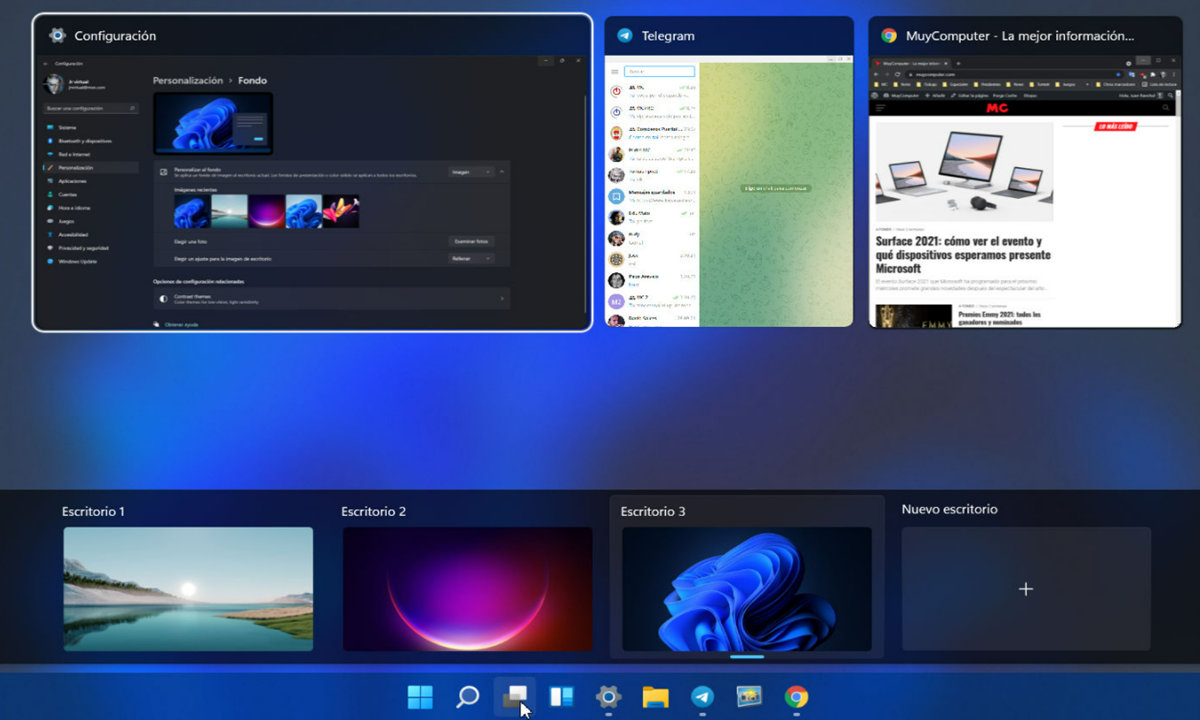“Windows 11 has the highest product satisfaction score of any previous version of Windows”Panos Panay, Microsoft’s vice president and chief product officer, assured during his visit to Computex 2022 in Taipei this week.
Microsoft changed the status of Windows 11 to a phase this month “broad implementation”. A condition that companies and organizations often use as a signal of the beginning of the deployment of a new operating system. The Redmond company also launched the system directly on Windows Update, so that all users with compatible computers can update from previous versions.
Obviously, after a gradual deployment Microsoft wants to achieve mass adoption of Windows 11 and Panay set this task in a keynote “A new era of PC” from the trade fair in Taiwan, where he sold the “goodies” of the system. According to the CEO, everything is “love” and “quality”, but is all gold glittering?
“I’m just looking at how people are using the product right now and how much they love it. That’s why we make these products, we want people to love what they’re wearing. And of course, we not only love to design, create and manufacture them, but we also see how our customers participate and bring that love. It’s so important “Panay explained in a presentation where marketing prevailed:
Adoption of Windows 11
Microsoft has not released a number of Windows 11 devices today, although it speaks of acceptance rates “Twice as many as Windows 10”. There are many doubts. Without exact official data, unofficial very different rhythms suggest. AdDuplex holds it at 19.7%, while StatCounter gives it 8.4%. The same is true for the high proportion of Windows 11 in the Steam survey, unlike others such as those provided by Lansweeper and the predictions that «In early 2023, Windows 11 will be deployed on less than 10 percent of new enterprise computers«.
The reasons for the probably lower-than-expected acceptance rate of Windows 11 are well known, starting with increased minimum hardware requirements. Microsoft has increased them compared to previous versions of Windows in terms of RAM, storage or graphics capacity with DirectX 12 and added components such as a TPM chip or UEFI firmware compatible with the safe boot function. Although in the end its duty (in a chaotic strategy) has eased and Windows 11 can actually be installed on almost any PC, there is no doubt that the number of upgradeable computers has finally been reduced.
So much “love” as Panay believes Windows 11 he doesn’t fall in love. The system was created by mixing the basic and latest features of Windows 10 and the development work done for Windows 10X. It offers familiar features, supports much of the legacy of the vast Windows ecosystem and has brought a fresh breeze to the visual aspects and user interface. But basically it remains the same and there are few analysts who consider it to be Windows 10.5. Or tuned Windows 10…


and quality. Although Panay talks about “Quality, quality and quality” As a development approach, it is true that the system is not an example of customization and usability, and many of the features promised to run are missing. The original version was also released with very serious bugs (such as the one that affected the AMD CPU) and every update released comes with bugs.
And on the other hand, we have Windows 10 in all its glory. It’s just working, and announcing to Microsoft that its technical support will last – at least – until October 2025 is a guarantee that some users will postpone the update.
Windows 11 will continue to grow, but at what rate? Microsoft has overwhelming control over the channel, and all new computers that come in pre-install it. Trade migration will also increase the overall quota. But there is still a lot to do to improve the “love” and “quality” that Panay’s presentation at Computex focused on.